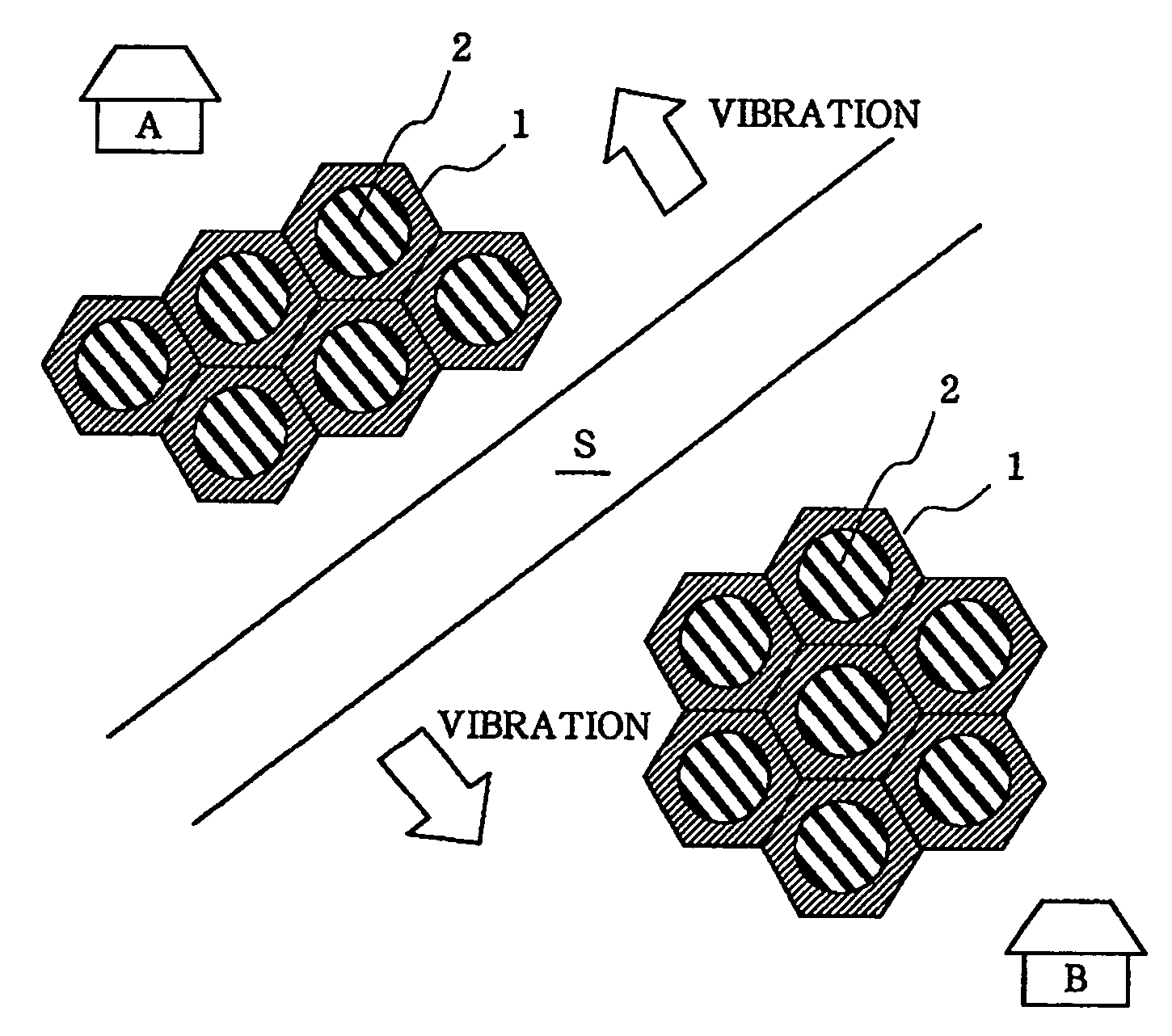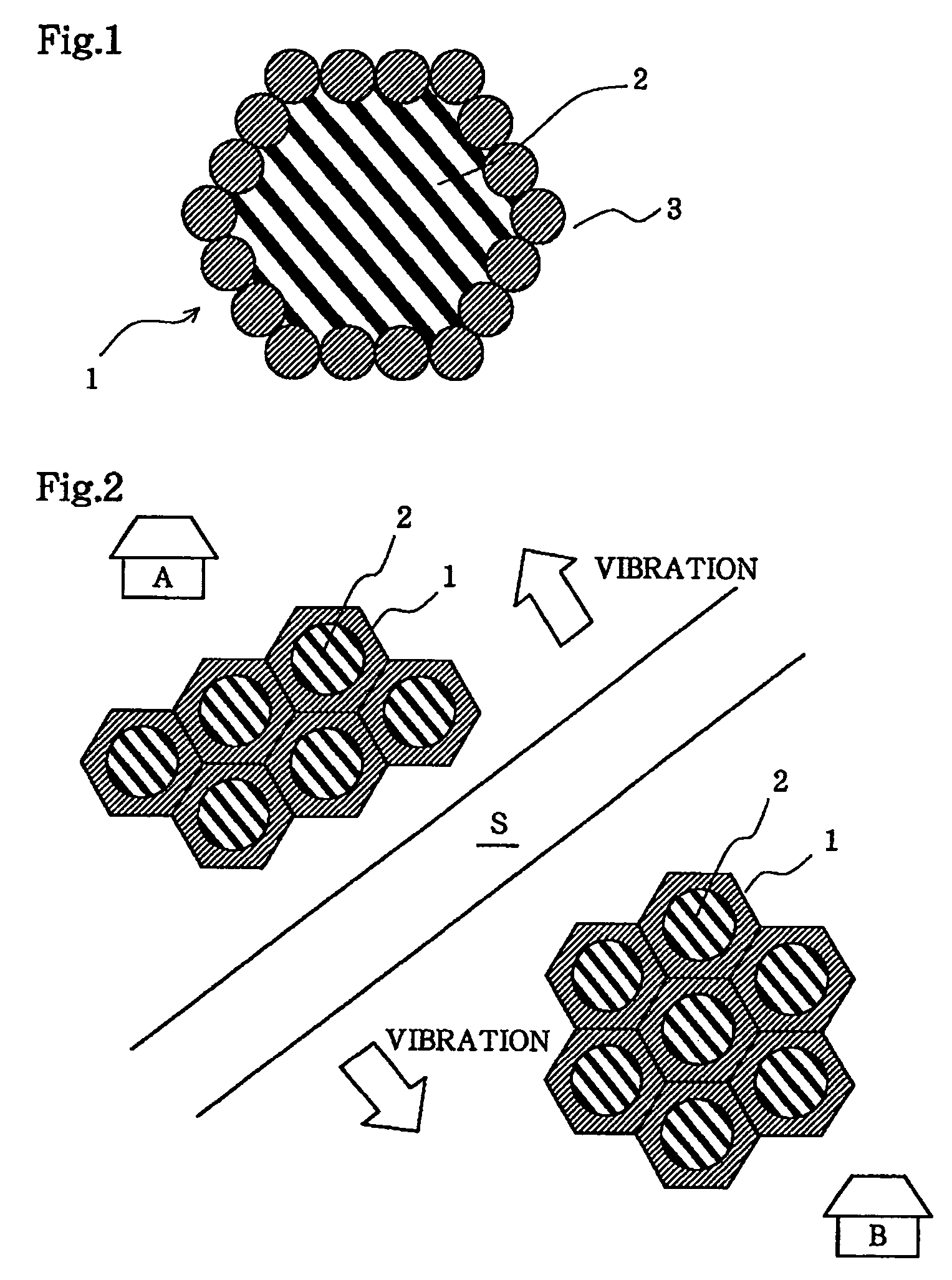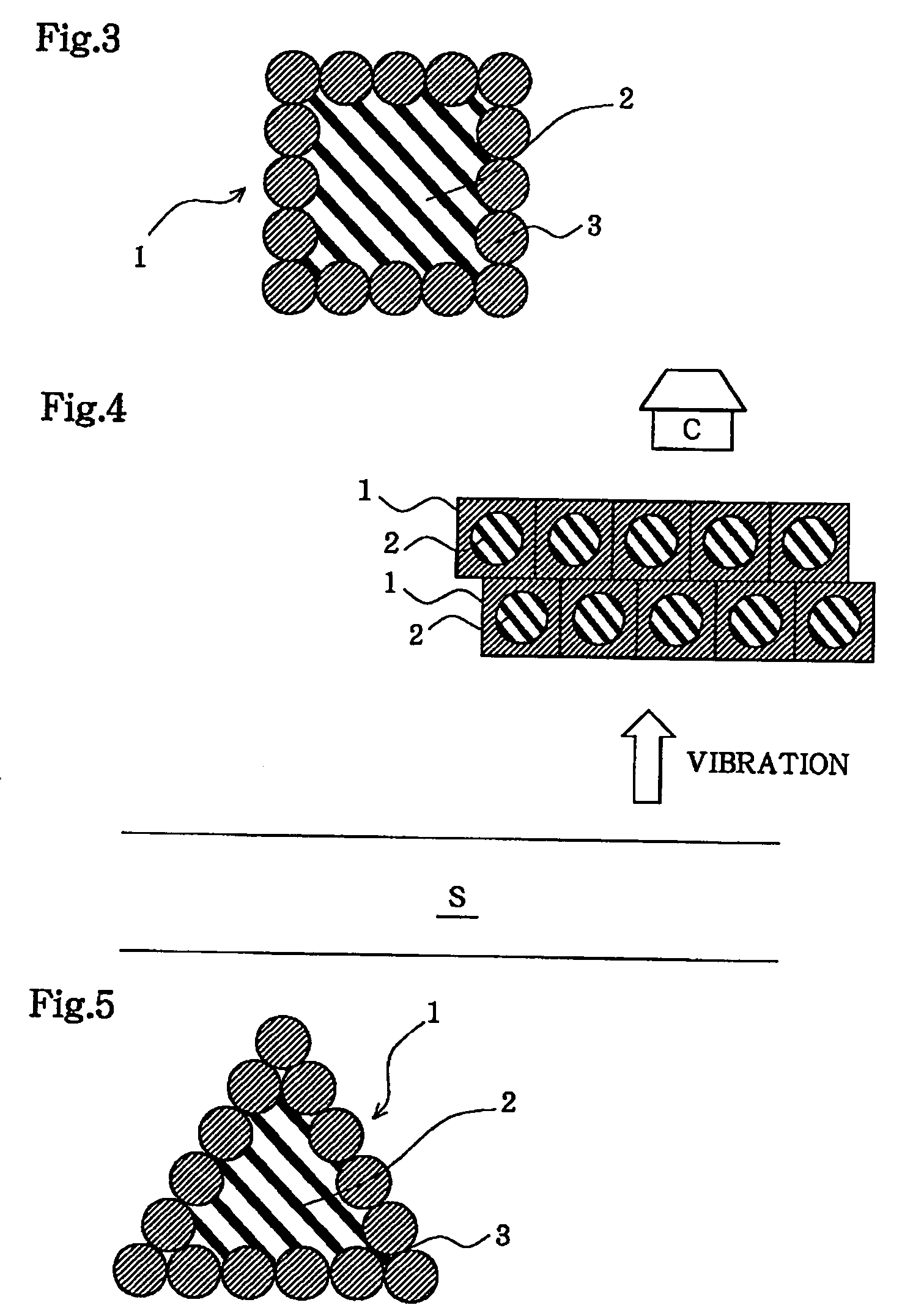Vibration-proof construction method
a construction method and vibration-proof technology, applied in the direction of shock-proofing, foundation engineering, roads, etc., can solve the problems of increasing costs, losing vibration-blocking effects, and frequent vibration disturbances along the side of roads, so as to reduce construction costs, improve vibration-proof effects, and improve the effect of vibration-proof effects
- Summary
- Abstract
- Description
- Claims
- Application Information
AI Technical Summary
Benefits of technology
Problems solved by technology
Method used
Image
Examples
example 1
CONSTRUCTION EXAMPLE 1
[0039]With the present preferred construction example shown in FIG. 1, schematically illustrating a cross-sectional view in the horizontal direction, a hard layer 1 is formed by driving multiple cylindrical columns 3 such that a horizontal cross-sectional shape becomes a honeycomb shape, following which an elastic layer 2 is formed by placing the for going rubber elastic member in the hard layer 1. Here, the hard layer 1 denotes the entire region formed with the multiple cylindrical columns 3. This honeycomb shape is used as a basic unit, which is appropriately placed in the ground directly underneath or around the structure which generates vibration or receives vibration. The number of cylindrical columns in one unit is preferably 5 to 50, more preferably 8 to 30, from a viewpoint of vibration-proof effects and ease of construction and the like.
[0040]As shown in FIG. 2 schematically illustrating a cross-sectional view in the horizontal direction, when there ar...
example 2
CONSTRUCTION EXAMPLE 2
[0042]With the present preferred construction example, shown in FIG. 3 schematically illustrating a cross-sectional view in the horizontal direction, a hard layer 1 is formed by driving multiple cylindrical columns 3 such that a horizontal cross-sectional shape becomes a square shape, following which an elastic layer 2 is formed by placing the foregoing rubber elastic member in the hard layer 1. This square shape is used as a basic unit, which is appropriately placed in the ground directly underneath or around the structure which generates vibration or receives vibration. The number of cylindrical columns in one unit is preferably 5 through 50, more preferably 8 through 30, from a viewpoint of vibration-proof effects and ease of construction, as with the case of the honeycomb-shaped basic units in the foregoing Construction Example 1.
[0043]In FIG. 4, when there is a private residence C near a vibrating source S such as a road, a railroad, or the like, vibration...
example 3
CONSTRUCTION EXAMPLE 3
[0044]With the present preferred construction example shown in FIG. 5 schematically illustrating a cross-sectional view in the horizontal direction, a hard layer 1 is formed by driving multiple cylindrical columns 3 such that a horizontal cross-sectional shape becomes a triangular shape, following which an elastic layer 2 is formed by placing the foregoing rubber elastic member in the hard layer 1. This triangular shape is used as a basic unit, which is appropriately placed in the ground around the structure which generates vibration or receives vibration. The preferred number of cylindrical columns in one unit is the same as with the case of the foregoing construction examples.
[0045]In FIG. 6, when there is a private residence D near a vibrating source S such as a road, a railroad, and the like, vibration-proof construction which uses the aforementioned triangular shape for a basic unit is performed between the vibrating source S and the private residence D. W...
PUM
 Login to View More
Login to View More Abstract
Description
Claims
Application Information
 Login to View More
Login to View More - R&D
- Intellectual Property
- Life Sciences
- Materials
- Tech Scout
- Unparalleled Data Quality
- Higher Quality Content
- 60% Fewer Hallucinations
Browse by: Latest US Patents, China's latest patents, Technical Efficacy Thesaurus, Application Domain, Technology Topic, Popular Technical Reports.
© 2025 PatSnap. All rights reserved.Legal|Privacy policy|Modern Slavery Act Transparency Statement|Sitemap|About US| Contact US: help@patsnap.com



